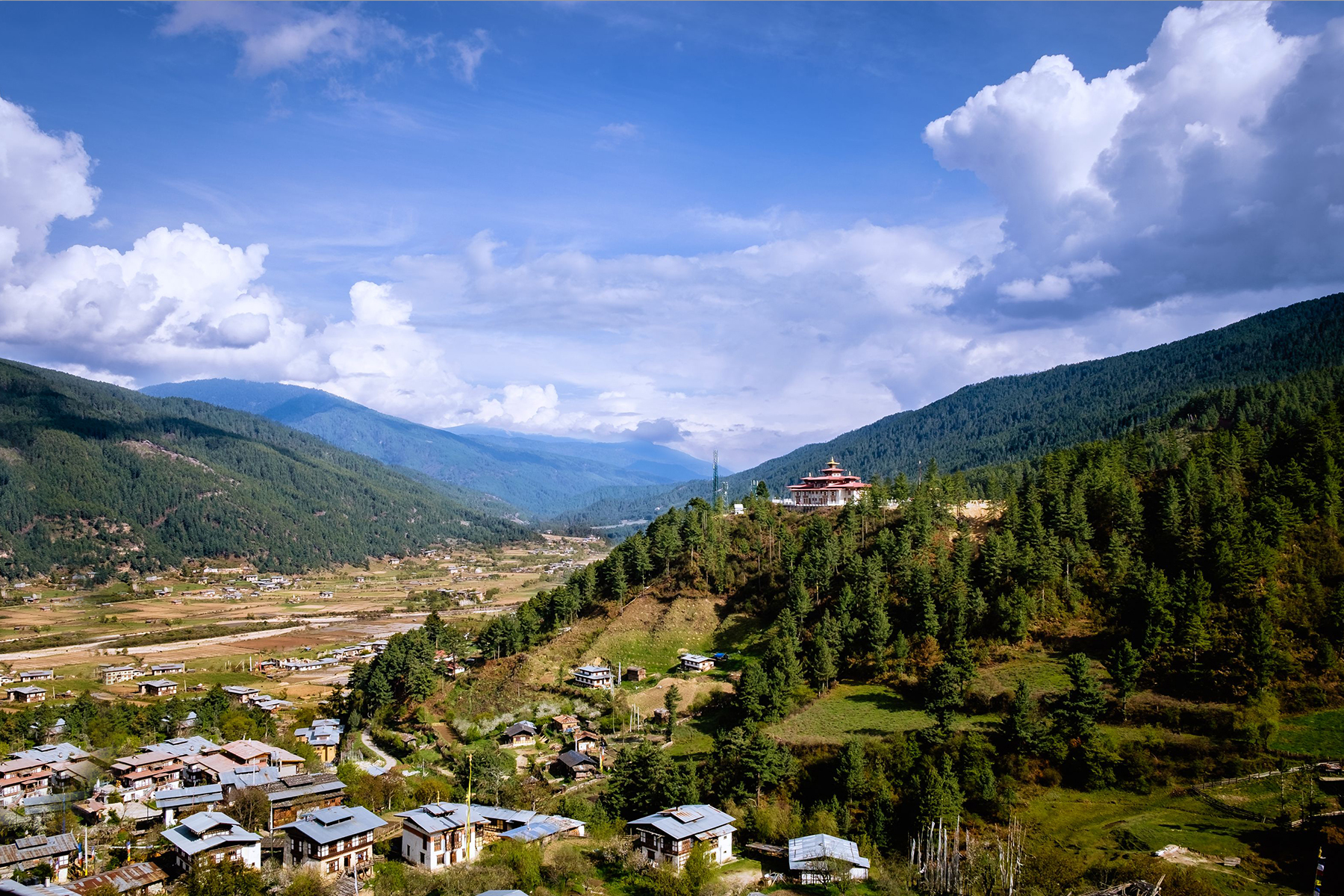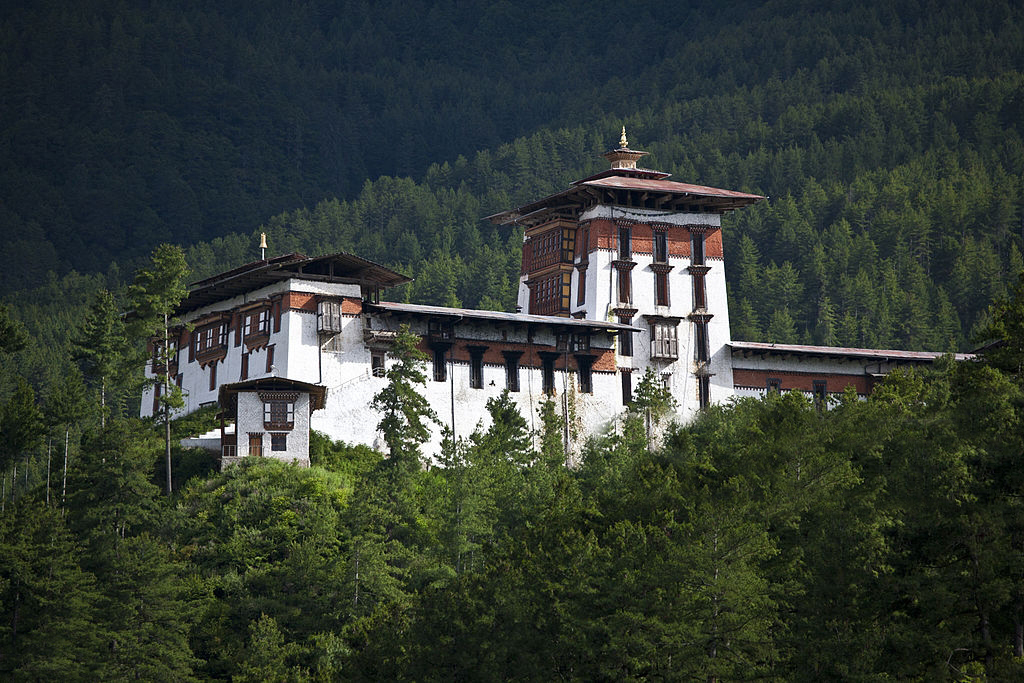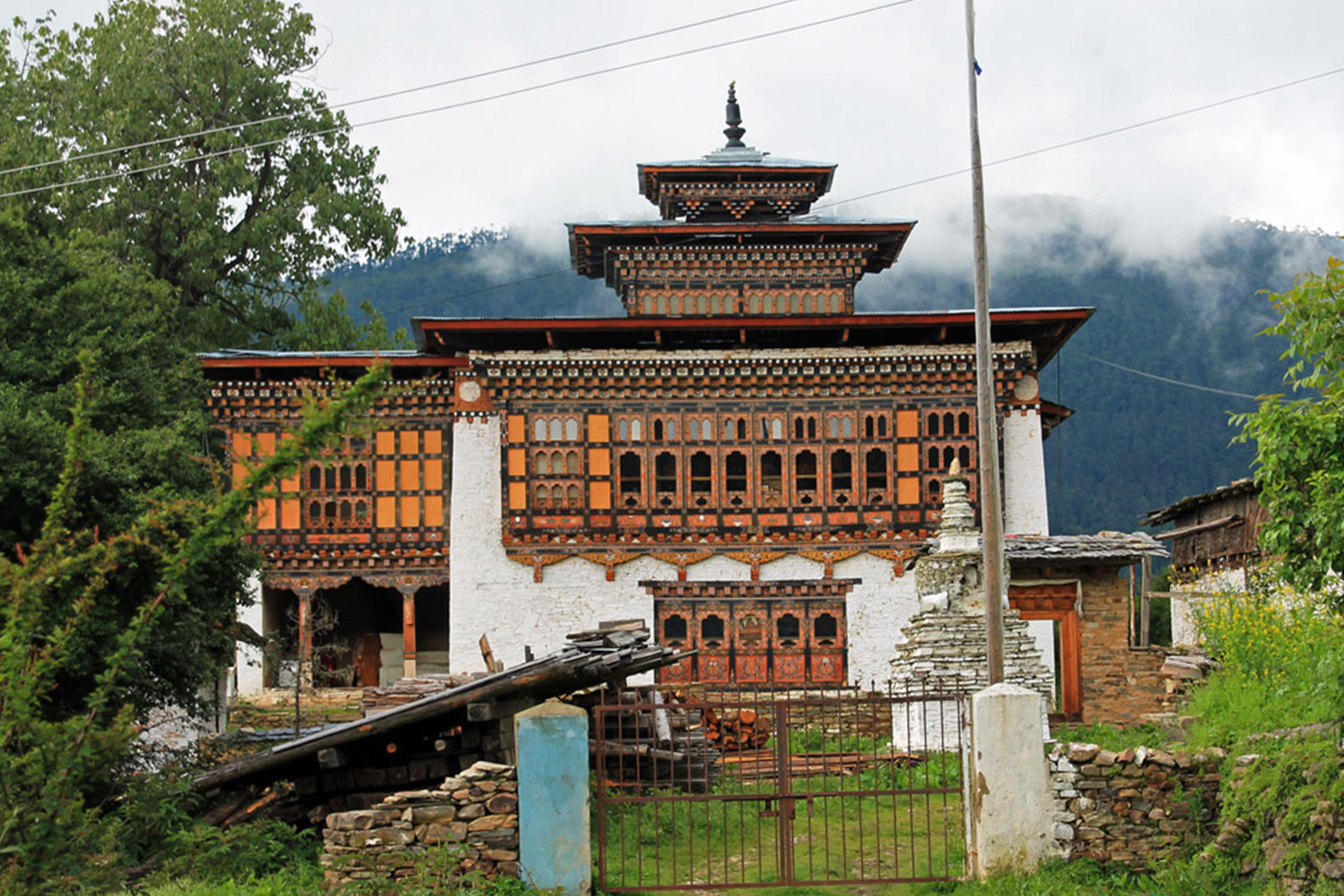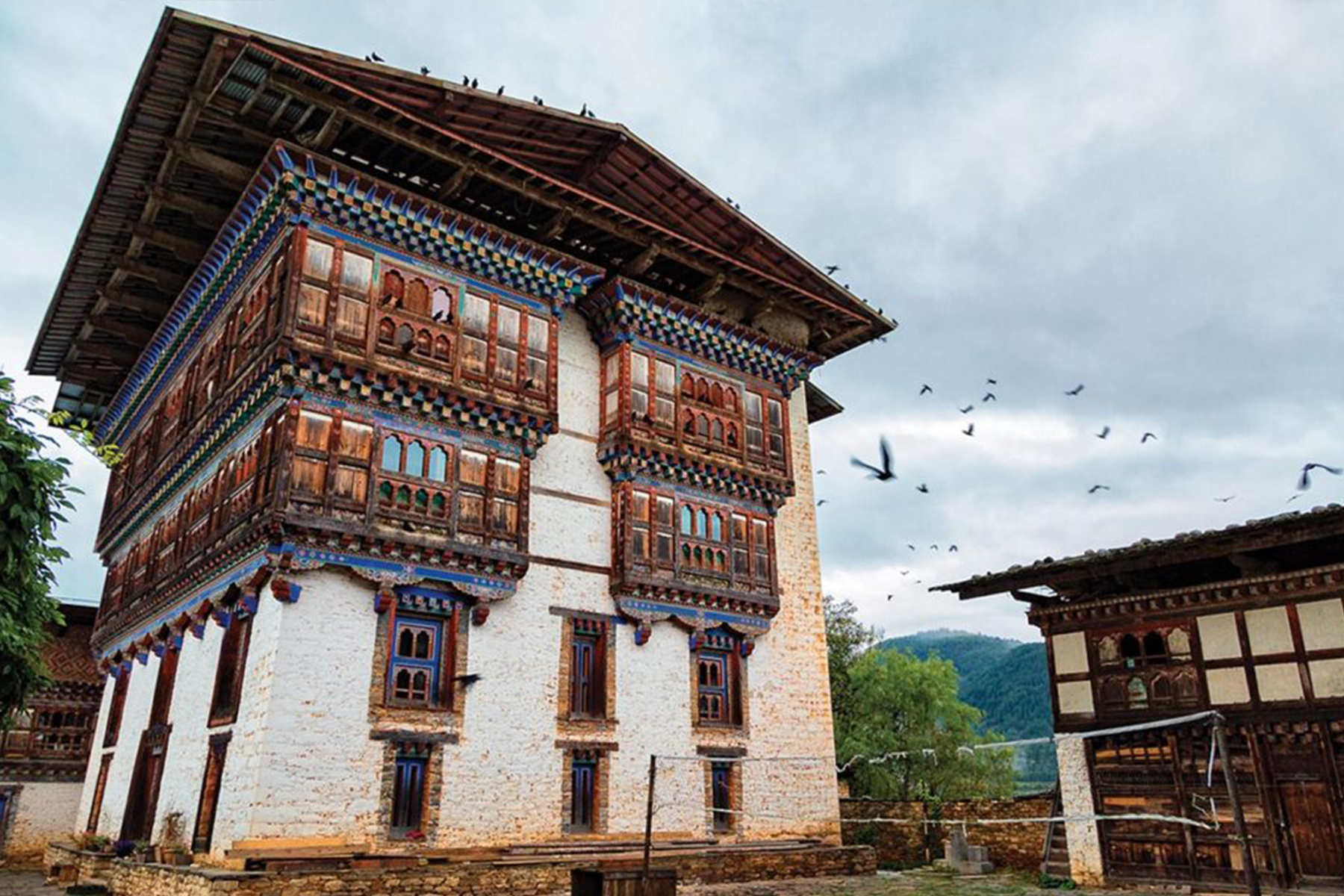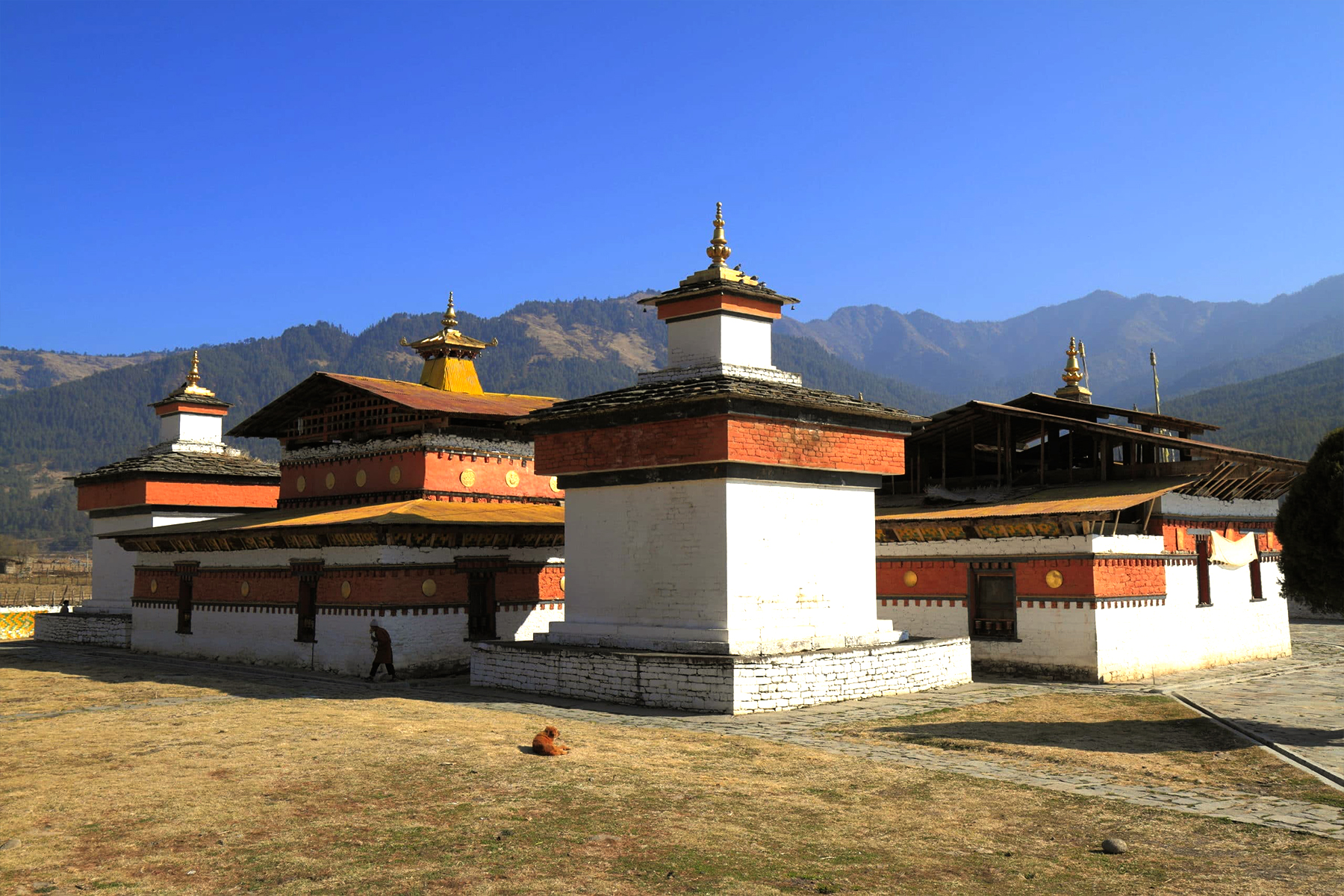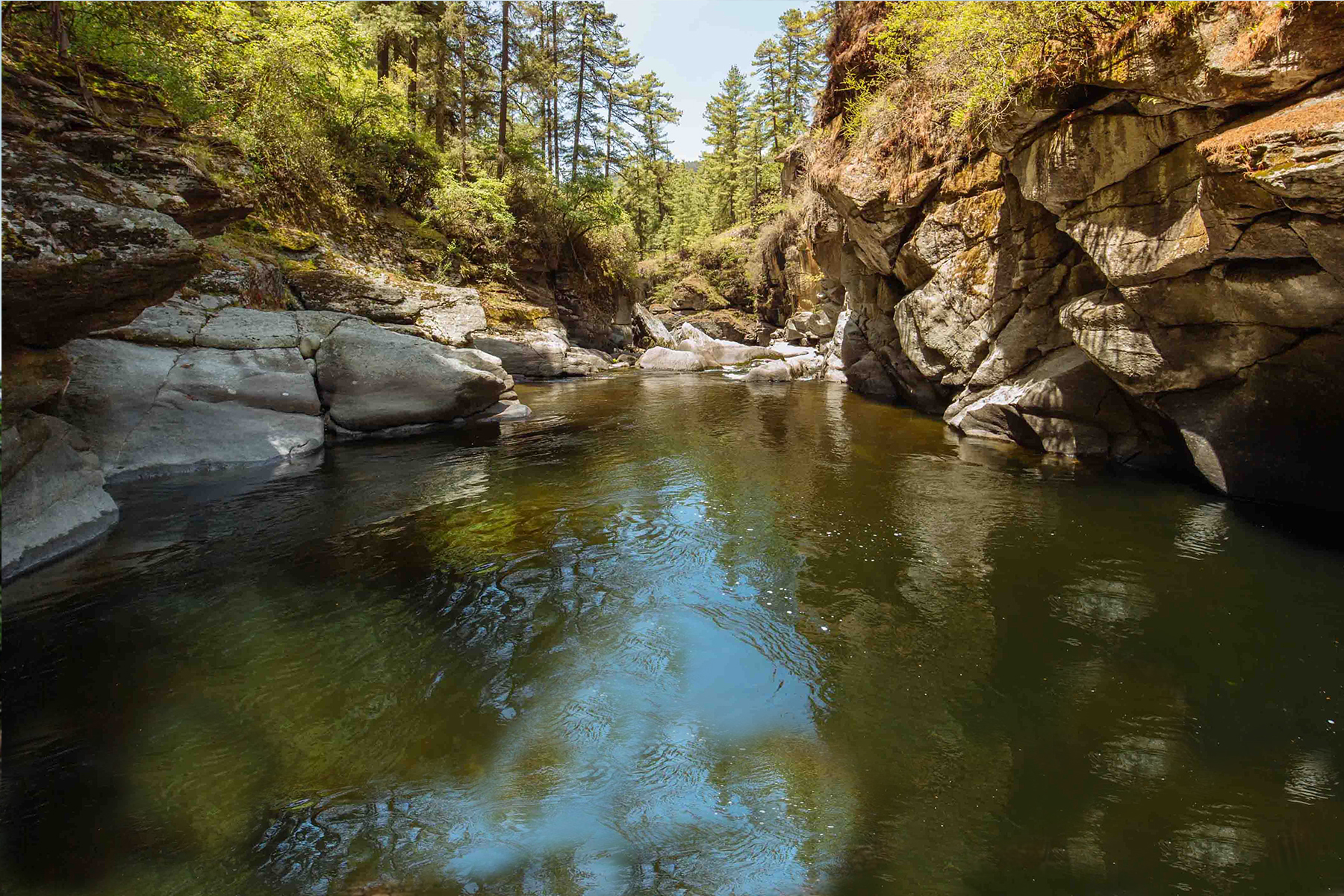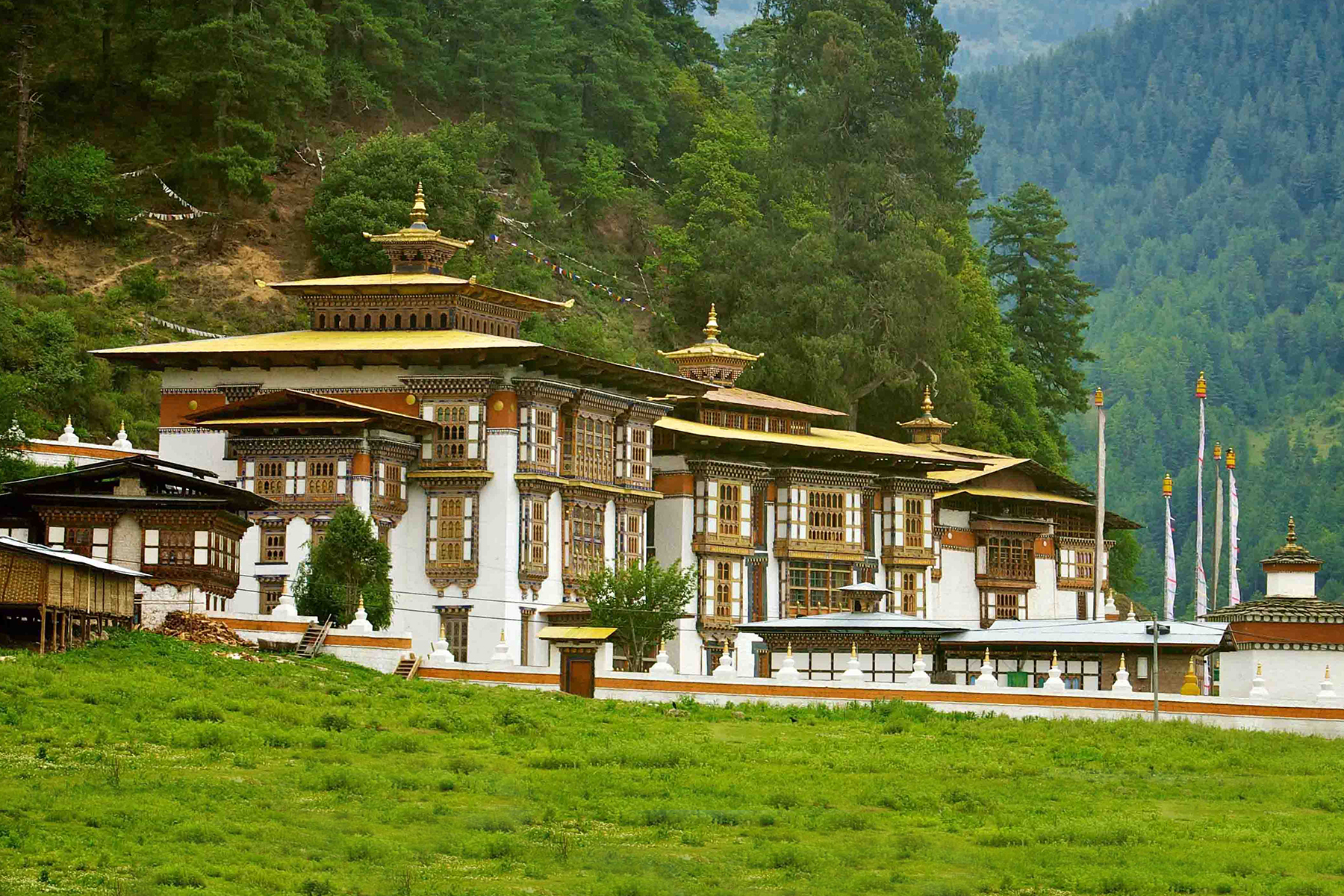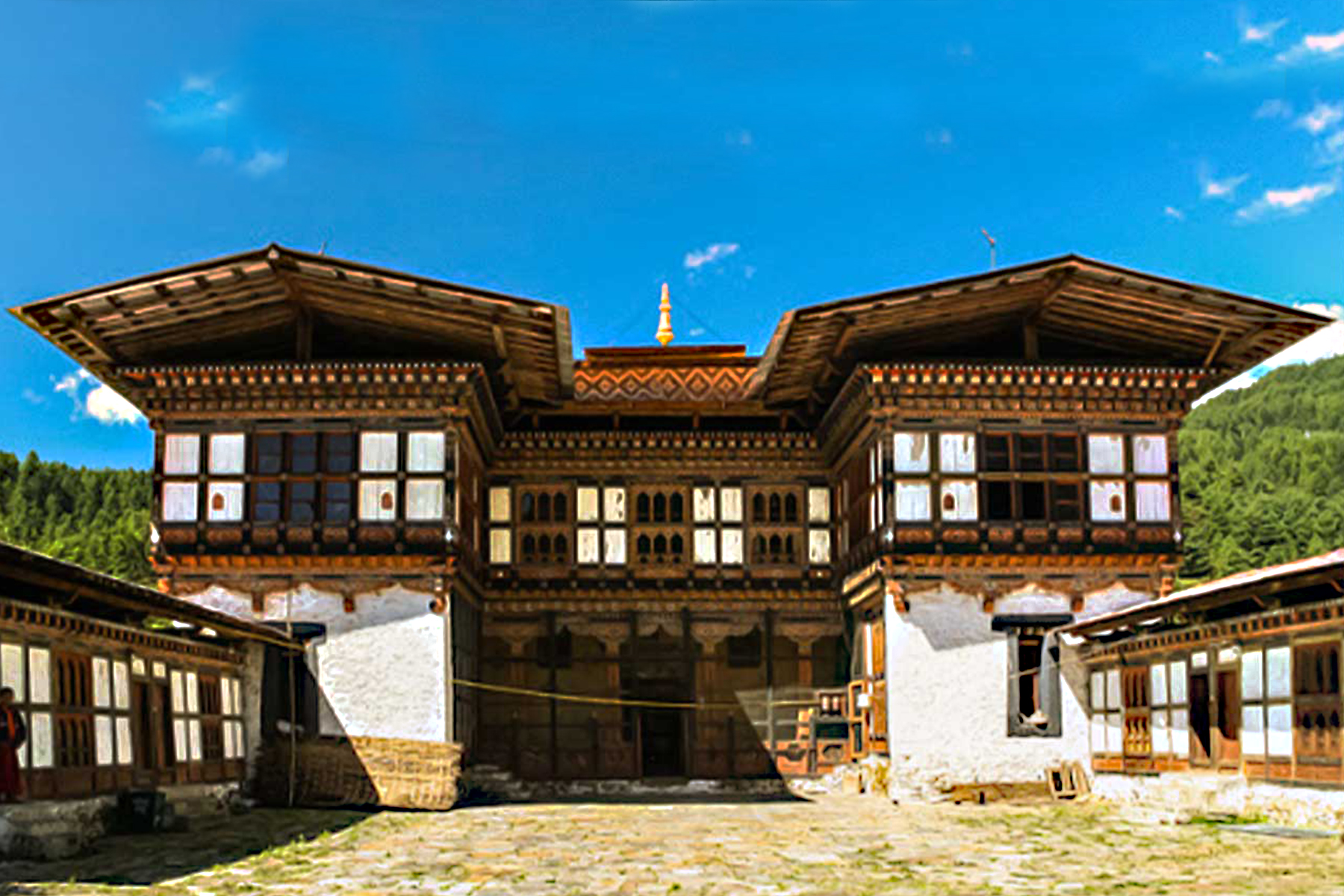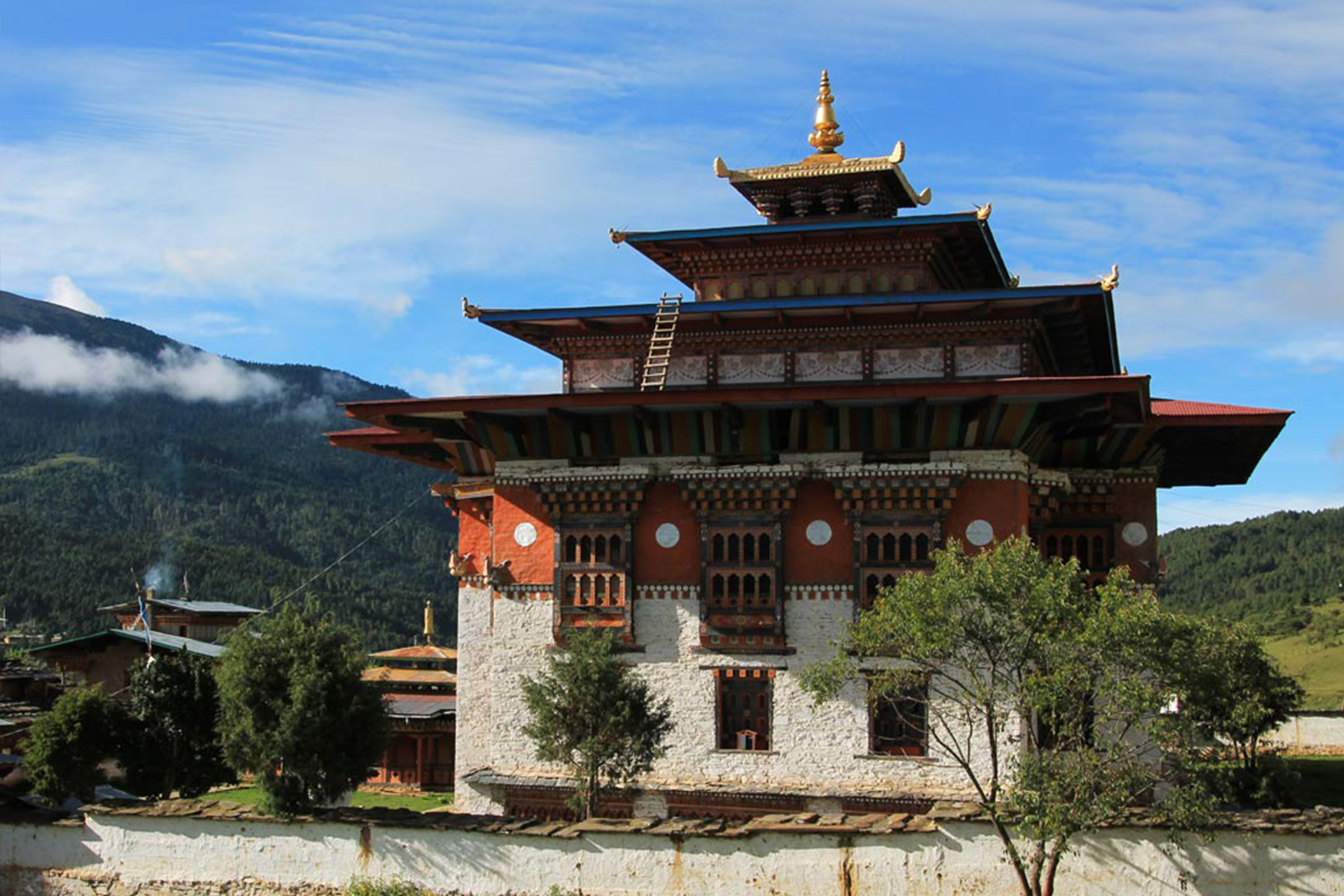Bumthang Valley
Located in: Bumthang
History & Overview
Bumthang is one of the most beautiful and sacred valleys in Bhutan.It is divided into four gewogs, namely Chhoekhor, Tang, Chhume and Ura.The main town in the valley is Jakar located in Chhoekhor. Other than being the spiritual heartland of the country it is also known for its apples,swiss cheese, honey, buckwheat and Bhutan's first brewery (brewing Red Panda wheat beer).
Jakar Dzong
Located in: Bumthang
History & Overview
Located on the ridge overlooking the beautiful valley of Chamkhar in Bumthang, the name Jakar Dzong translates to "The Castle of the White Bird". It was built in 1549 and later renovated in 1646. The Dzong is now used as administrative centre for the people Bumthang and also houses the region monk body.
Wangduecholing Palace
Located in: Bumthang
History & Overview
The palace is the historic seat of Bhutan's reining Wangchuck dynasty. The palace has one of the finest architecture in the country. It was built in 1857 by Trongsa Penlop Jigme Namgyal, the father of the First King of Bhutan. In 2022, it was converted into the Wangduecholing palace museum and cultural centre. It exhibits Bhutans history, art, craft, and architecture
Ogyencholing Palace
Located in: Bumthang
History & Overview
Ogyen Choling has a historical association with the great Tibetan master of Buddhism, Longchen Rabjam (1308-63). It is located in the beautiful valley of Tang, which is an hours drive from Jakar.
Jambay Lhakhang
Located in: Bumthang
History & Overview
Jambay Lhakgang is a 10 minutes drive from the main town, in Chokhor Gewog. The monastery was built in the seventh century by the Tibetan king, Songtsen Gampo. It is one of 108 monasteries he built to subdue evil spirits in the Himalayan region.Here, one of the most popular dances " The Naked Dance" is performed during the annual Jambay Lhakgang festival ( Mostly in November).
MeBar Tsho / The Burning Lake
Located in: Bumthang
History & Overview
It is located in Tang , 30-minute drive from Chamkhar town. According to legend, Terton Pema Lingpa (treasure discoverer) had a vision of the sacred treasure that Guru Rinpoche had hidden within the lake. Pema Lingpa held a burning butter lamp in his hand and jumped into the lake. He re-emerged holding a chest and a scroll with the butter lamp still burning. On auspicious days people offer butter lamps at the Lake.
Kurjey Lhakhang
Located in: Bumthang
History & Overview
Kurje Lhakhang complex has three structures namely Guru Lhakhang, Sampa Lhundrup Lhakhang, and Ka Goen Phur Sum Lhakhang. The oldest temple, Guru Khakhang was built in 1652 by king Sindhu Raja against a cave where Guru Rinpoche meditated and subdued the local deity, Shelging Karpo. the second temple was built on a cave containing a rock with the imprint of Guru Padmasambhavas body. The third temple was built by the Queen Grandmother Ashi Kesang Choden Wangchuck. These three temples are surrounded by a wall with 108 stupas.
Thangbi Goemba
Located in: Bumthang
History & Overview
Thangbi Goemba, founded in 1470 by Shamar Rinpoche and later entrusted to Pema Lingpa, is a serene monastery in Bhutan’s Bumthang Valley. Its Dusum Sangay chapel, dedicated to the past, present, and future Buddhas, features one of Pema Lingpa’s sacred chainmail relics at the entrance. Today, about 20 gomchen (lay monks) preserve its traditions, including an annual fire ceremony and vibrant mani festival in October. Reached via a 3.5km unpaved road north of Kurjey Lhakhang, the route passes charming "milk boxes" where herders leave fresh dairy for Jakar. Thangbi also serves as a trailhead for hikes to Ngang Lhakhang (via a painted rock, water mill, and Kharsa Village bridge) and Luege Rowe, blending spirituality with stunning Himalayan landscapes.
Tamshing Monastery
Located in: Bumthang
History & Overview
Tamshing Monastery was built in 1501 by Terton Pema Lingpa, Bhutan’s legendary "treasure revealer" and one of its most revered saints. His coming was prophesied centuries earlier by Guru Rinpoche, the patron saint of Bhutan. A master of Vajrayana Buddhism and a gifted artist, Pema Lingpa personally sculpted the temple’s sacred statues and painted its exquisite frescoes—many of which remain vibrantly preserved today, offering visitors an awe-inspiring glimpse into Bhutan’s spiritual and artistic heritage.
Konchogsum Lhakhang
Located in: Bumthang
History & Overview
Kenchosum Lhakhang (also known as Tselung Lhakhang in the Pema Kathang and historically called Choekhor Lhakhang during Pema Lingpa’s time) is one of Bhutan’s most sacred ancient temples. Its origins trace back to the 8th century, when Guru Rinpoche himself instructed Tibetan King Thrisong Deutsen to construct a three-story temple modeled after Tibet’s legendary Samye Monastery. Built to serve as a spiritual beacon for peace, prosperity, and the flourishing of Dharma, the temple was completed in the 9th century and remains a vital center of devotion in Bumthang Valley to this day.


